Το φρούριο της Κέρκυρας
 Work Artirst Modal
Work Artirst Modal
Το φρούριο της Κέρκυρας
Γιαλλινάς Άγγελος (1857 Κέρκυρα - 1939 Κέρκυρα)
Σπούδασε αρχικά στην Κέρκυρα, κοντά στον Χαράλαμπο Παχή και ολοκλήρωσε τις σπουδές του στη Ρώμη, τη Νάπολη και τη Βενετία. Το 1875 ξεκίνησε την εκθεσιακή του δραστηριότητα συμμετέχοντας στα Ολύμπια, ενώ το 1886 παρουσίασε την πρώτη του ατομική στην Αθηναϊκή Λέσχη. Το 1974 η Εθνική Πινακοθήκη οργάνωσε αναδρομική έκθεση του έργου του. Το 1881, μαζί με τον Β. Μποκατσιάμπη και άλλους Κερκυραίους φιλότεχνους, ίδρυσε την Καλλιτεχνική Σχολή της Κέρκυρας, στην οποία δίδασκε και ο ίδιος. Ταξίδεψε και ζωγράφησε σε αρκετές πόλεις της Ισπανίας και στην Κωνσταντινούπολη, ενώ πραγματοποίησε με εξαιρετική επιτυχία πολλές ατομικές εκθέσεις στο Λονδίνο, το Παρίσι και άλλες ευρωπαϊκές πόλεις. Μετά από πολλές αναζητήσεις εκφραστικών τρόπων ήδη από την εποχή των σπουδών του, ο Γιαλλινάς στράφηκε στην υδατογραφία, την οποία καλλιέργησε σχεδόν αποκλειστικά και εξελίχθηκε σε έναν από τους κορυφαίους Έλληνες υδατογράφους. Ζωγραφίζοντας κατά κύριο λόγο τοπία αλλά και ορισμένα ηθογραφικά θέματα, δημιούργησε εικόνες ποιητικές που απηχούν μια κλασικιστική-ρομαντική αντίληψη και χαρακτηρίζονται από την ισορροπία της σύνθεσης, την ιδιαίτερη επιμέλεια στην απόδοση των λεπτομερειών και την ευαισθησία στην απόδοση των χρωματικών διαβαθμίσεων.
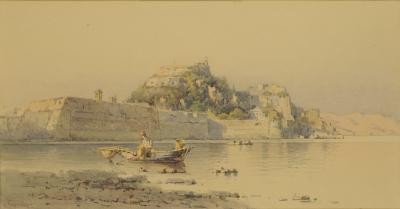
Μετά από πολλές αναζητήσεις εκφραστικών τρόπων, ήδη από την εποχή των σπουδών του, ο Γιαλλινάς στράφηκε στην υδατογραφία, την οποία καλλιέργησε σχεδόν αποκλειστικά και εξελίχθηκε σε έναν από τους κορυφαίους Έλληνες υδατογράφους, δημιουργώντας σχολή στον τομέα του. Ζωγραφίζοντας κατά κύριο λόγο τοπία (θαλασσογραφίες, μνημεία της αρχαίας Ελλάδας, του Βυζαντίου και της Ανατολής, συνοικίες κ.ά.), αλλά και ορισμένα ηθογραφικά θέματα, δημιούργησε εικόνες ποιητικές, που απηχούν μια κλασικιστική-ρομαντική αντίληψη και χαρακτηρίζονται από την ισορροπία της σύνθεσης, την ιδιαίτερη επιμέλεια στην απόδοση των λεπτομερειών και την ευαισθησία στην απόδοση των χρωματικών διαβαθμίσεων. Εκμεταλλευόμενος επίσης τις ιδιότητες της υδατογραφίας, ο Γιαλλινάς αποδίδει τα τοπία του με ύφος ιμπρεσσιονιστικό, διαλέγοντας τα μαλακά περάσματα των τόνων. Το τοπίο της Κέρκυρας εξιδανικεύεται και περνά στο χώρο του ιδεατού.


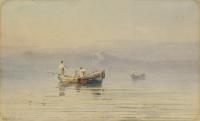
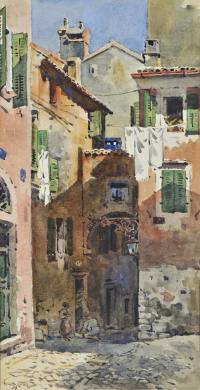


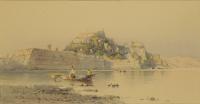

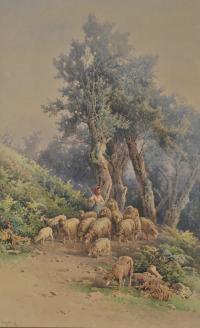
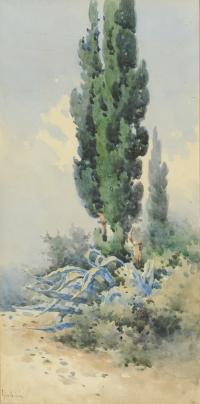
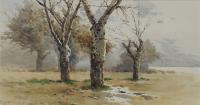
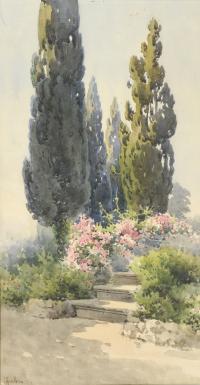

 Π.Ε.Π. ΙΟΝΙΩΝ ΝΗΣΩΝ
Π.Ε.Π. ΙΟΝΙΩΝ ΝΗΣΩΝ

